How to Grow Avocados

Last updated September 7, 2023
If you live in the right zone, you can grow avocados in your yard and enjoy a bountiful crop for guacamole and avocado toast. These trees, which are native to Mexico and Central America, thrive in USDA Hardiness Zones 8 to 11 (the southern coastal regions and the deep Southern half of the U.S., as shown on this map).
Avocados are low-maintenance, fast-growing trees that produce abundant fruit in these regions.
You can also grow a seed indoors and have an avocado tree to enjoy as a houseplant, but it’s unlikely it will ever produce fruit. The best and fastest way to ensure a harvest is to plant a tree outdoors.
Difficulty:
Beginner
Duration:
2-4 hours
Table of Contents
Gather Supplies
Find and Prep the Site
Test pH Level
Dig the Hole
Plant the Tree
Water and Fertilize
Gather Supplies
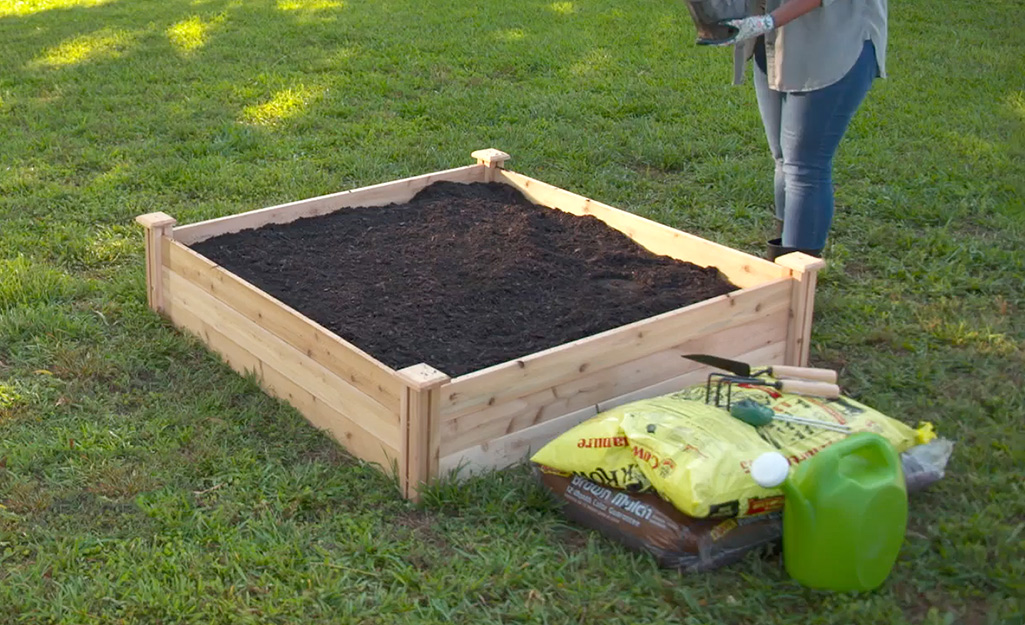
Avocado trees grow best at temperatures from 60 to 85 degrees Fahrenheit, so plant your young tree outdoors when the weather warms up, or from March to June in suitable regions. If you start later in the summer, the tree may not be able to take up enough water and could be damaged by the hot sun.
Find and Prep the Site
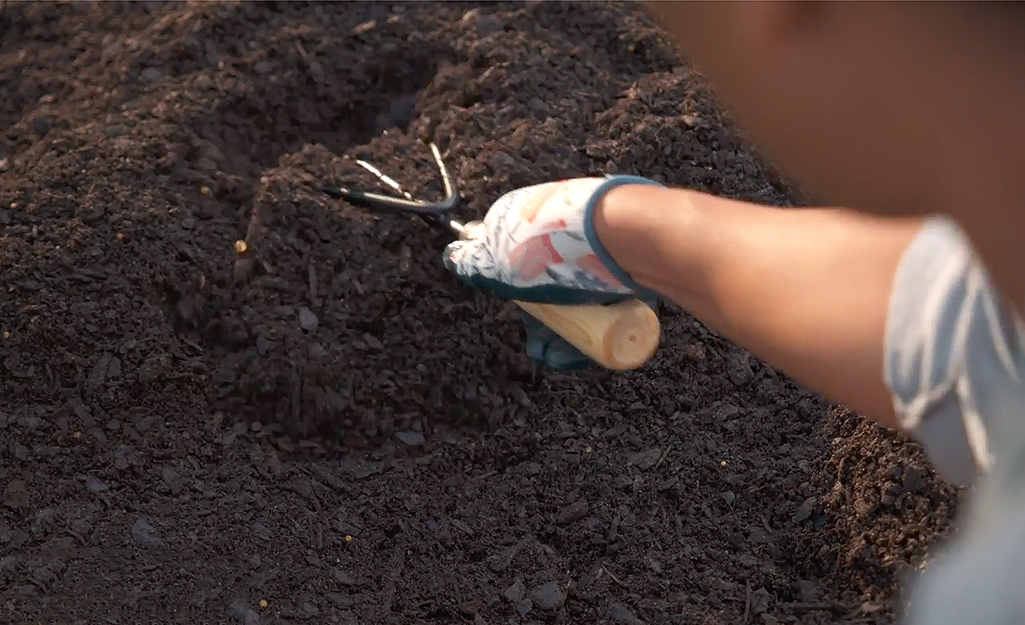
- For the quickest harvest, plant a young tree outdoors in a site that gets full sun and where the ground drains easily.
- If you have heavy clay, you can plant your avocado in a raised bed or in a mound of loosened soil that has been raked free of rocks, sticks and other debris. Make the mound about 12 to 24 feet high and 3 to 5 feet in diameter. For best results, the soil in the raised bed or mound should have a coarse texture and drain easily, so you may need to work in some compost.
- If you’re planting in the ground, dig a hole away from your lawn, driveway and any sidewalks so the roots won’t have to compete for space as they grow. This will also help prevent chemicals and salts from seeping into the ground around your tree if you use ice-melting products during the winter. Make the hole as deep as the root ball and twice as wide.
- Avocado trees have shallow, sensitive roots, so be careful when you handle them. If your tree is root-bound, gently loosen the roots and remove some of the soil that is clinging to them. Use pruners to clip any roots that are growing in circles and remove any broken or decayed roots.
Test pH Level
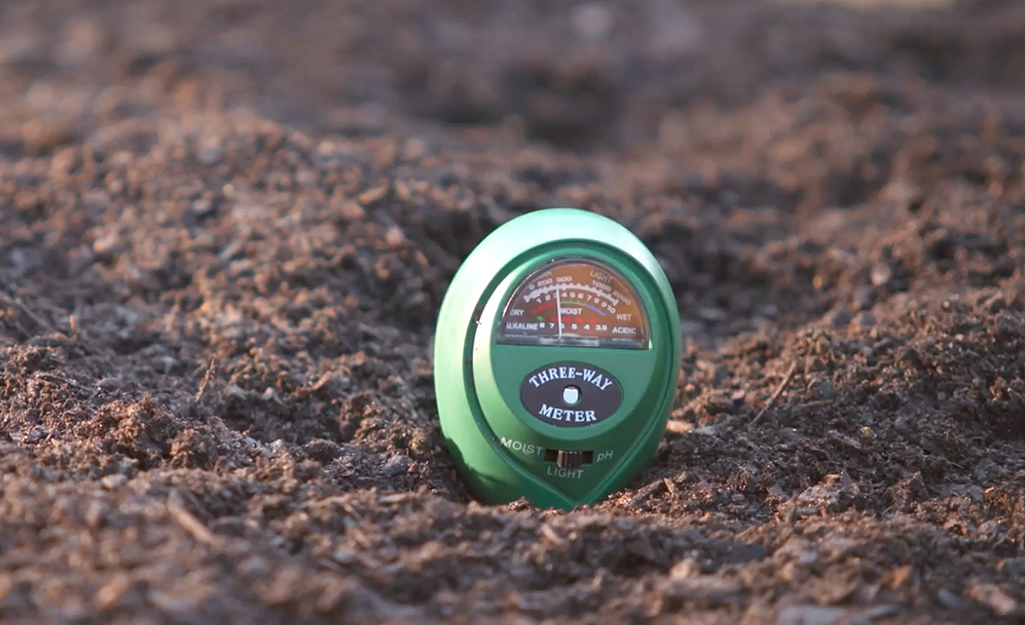
- Avocados grow best in soils with a pH level of 6.0 to 6.5.
- Use a purchased pH test kit or ask your local Cooperative Extension Service agent for a test. Tell them what you’re growing so they’ll know what amendments, if any, to recommend.
- To ensure your tree thrives, work in organic materials, like garden compost.
Dig the Hole
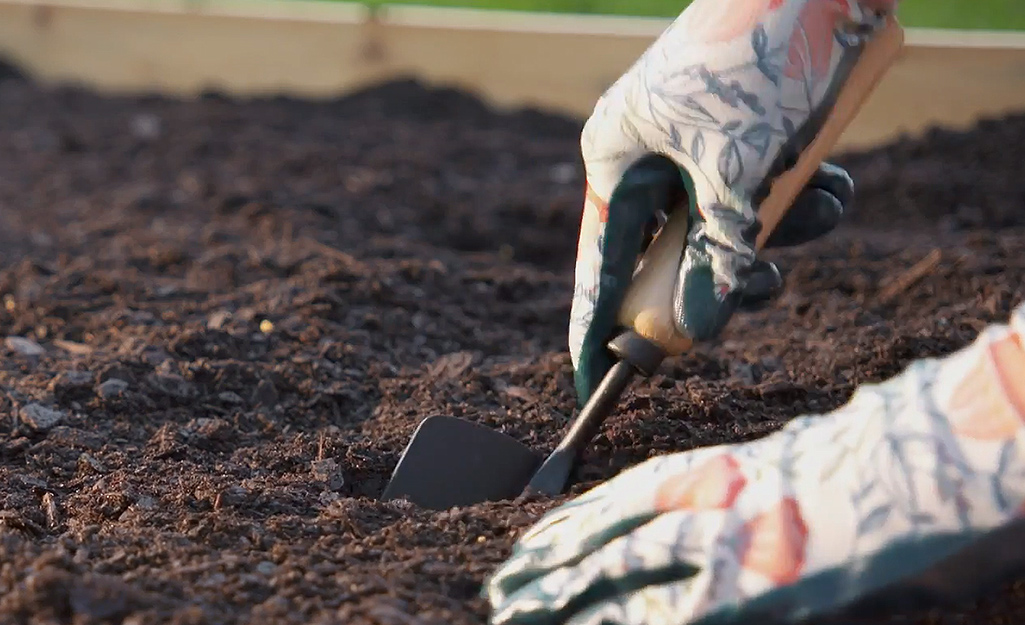
- Grafted trees can start bearing fruit in three to four years. Outdoor trees started directly from seeds can take up to 10 to 15 years to produce a crop.
- When you're ready to plant, dig your hole as deep as the root ball and twice as wide.
Plant the Tree
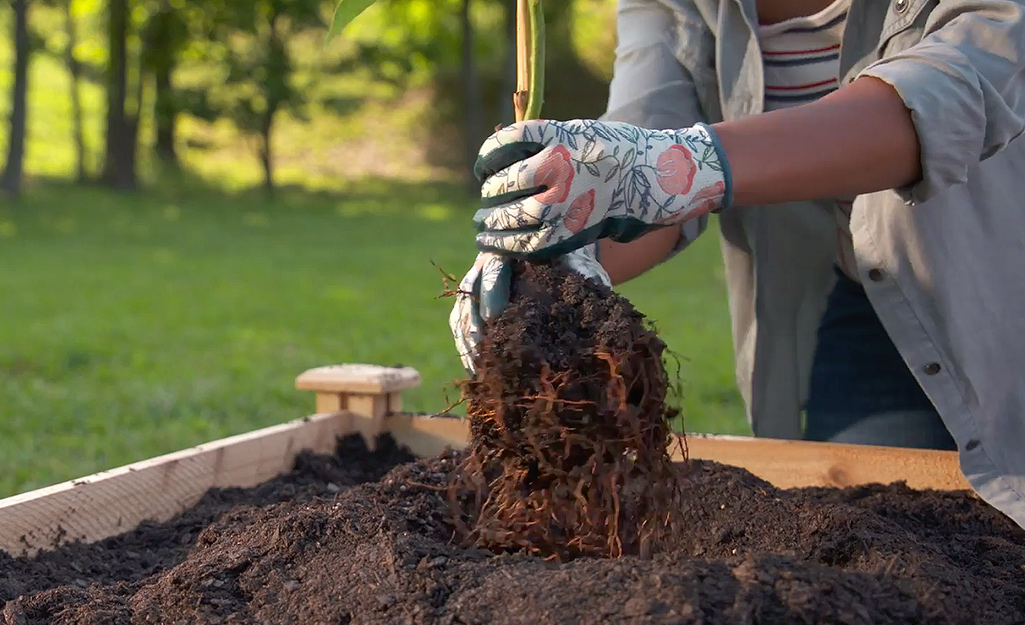
- No pruning is necessary, unless you see dead or damaged wood, or you simply want to limit the size of the tree. A mature avocado tree can reach 30 to 40 feet high.
- Gently spread out the tree roots, cover them with soil and water thoroughly.
- If your tree is root-bound, gently loosen any clinging soil and clip away any root decay.
Water and Fertilize
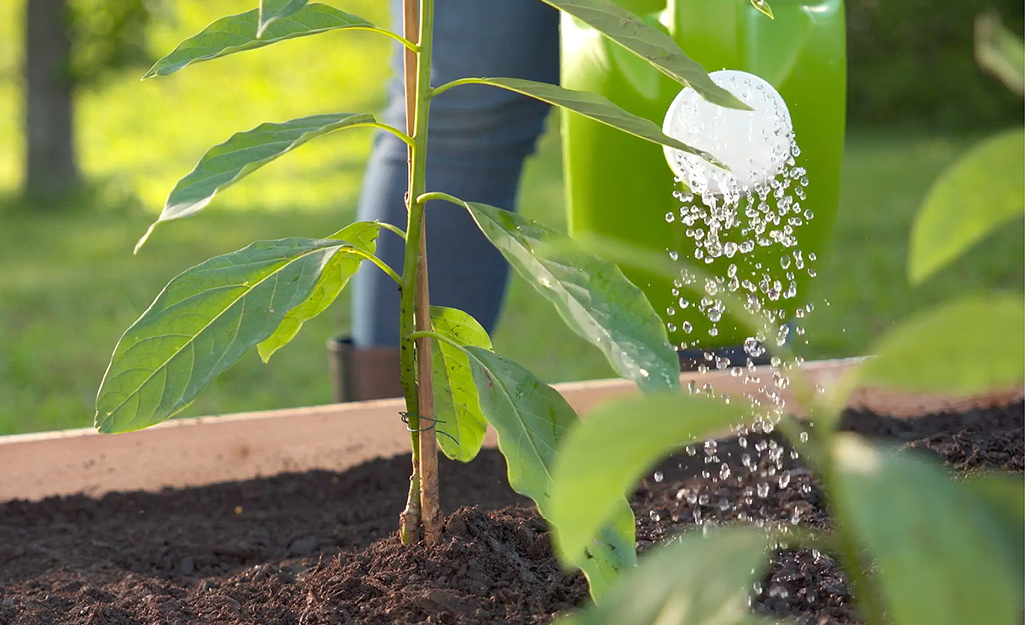
- Using your soaker hose, water your tree two or three times a week until it’s fully established. A soaker hose will help keep the water from running off, as it often does with a garden hose. Applying water slowly lets it penetrate the ground and reach the roots.
- Fertilize your tree regularly with citrus and avocado food. Read the package for instructions on amounts.
- No pruning is required, unless there's damage. A mature avocado tree can reach 30 feet tall.
Care and Harvest
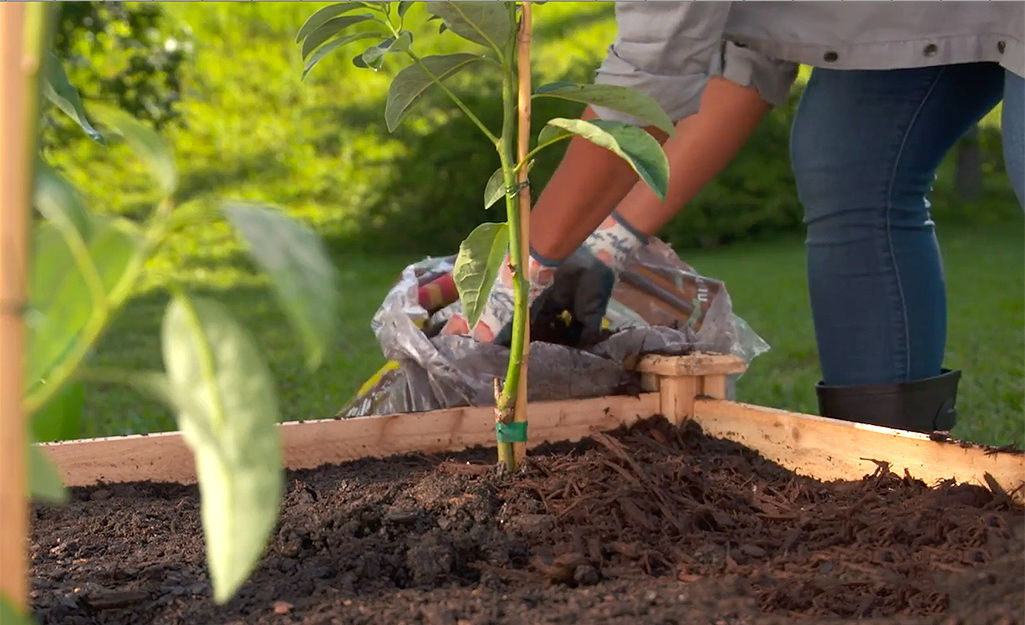
The fruits are ready to eat when you can gently press them and they feel slightly soft, but not mushy. The skins may darken too, but you can’t always go by color.
- Lastly, lay down a thick layer of mulch. This will help your tree retain moisture and help keep weeds from popping up.
- Look for a pale to dark green color as a sign that the fruits are ready to pick. Bring them inside and let them stay at room temperature for about seven to 10 days to soften.
- You can speed up the process by placing an avocado in a paper bag for a few days.
- Avocado trees are fast-growing and will double in size each year. Fruit stays on the tree for a year to ripen, so expect at least two years before you harvest avocados.
Grow an Avocado as a Houseplant
It’s easy to grow an avocado from seed to enjoy as a houseplant. This is also a fun gardening project to do with kids.
- Simply save a seed, which is the pit of the fruit, and wash it off. Next, insert three or four wooden toothpicks into the wide end of the pit, about a third of the way down from the pointed end. Fill a clean glass or jar with water and sit the pit on the rim, so it's suspended halfway out of the water.
- Put the jar in a warm spot that gets bright light, such as a windowsill. Refill it as needed so the bottom of the pit stays covered. Roots should develop in two to six weeks, where the top of the pit will crack.
- When a sprout appears, find a container that’s about 6 to 8 inches in diameter. If it doesn’t have drainage holes, make a few in the bottom, and then fill it with a quality potting soil that drains easily.
- Plant the seed, keeping at least half of it above the soil. Water it thoroughly and put it in a sunny, warm spot.
- Pinch the growing tip of the stem when it’s about 6 inches tall and continue to pinch back a few stems to make your plant bushy.
- Repot the avocado each time it outgrows its pot, or until it becomes as large as you want.
- As with an outdoor avocado, fertilize it with a balanced citrus and avocado fertilizer, following the directions on your product. Remember, since it’s in a pot, it won’t need as much fertilizer as a plant in the ground.
- The air in your home can become dry from heating or air conditioning, so to make sure your plant gets enough humidity, you can mist it regularly with a spray bottle, use a room humidifier or keep it in a room with moist air, like a kitchen or bathroom.
- Once the weather is reliably warm, your plant can vacation outdoors. Move it first into a sheltered spot and gradually expose it to more light and wind so it has time to adjust to its new surroundings. It may need more frequent watering once it’s outside.
- Bring it back in before the temperatures drop below 60 degrees.
Avocado Growing Tips
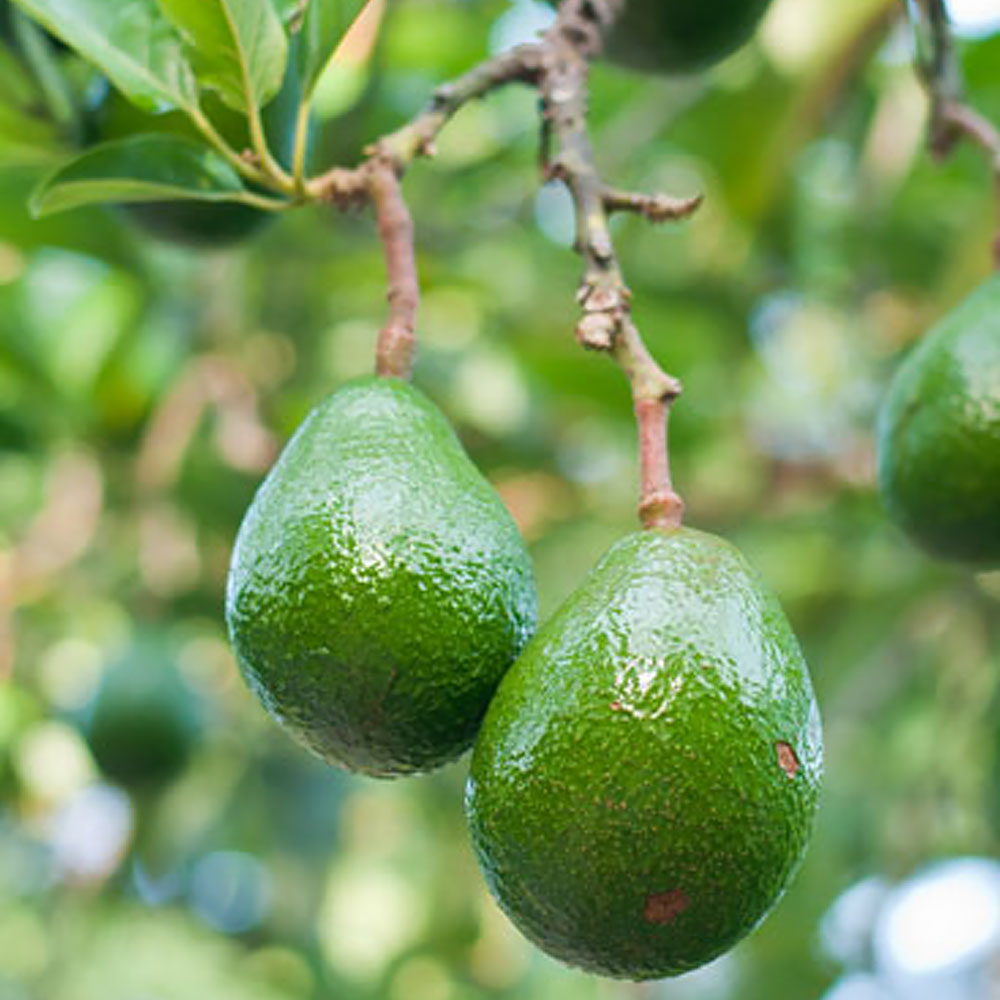
If you’re growing avocados in your garden, it’s also important to pick the right kind to get the most fruit. Avocado flowers go through both male and female pollination phases at different times, and different varieties are classified as “A” or “B.”
- The flowers on “A” types start out as females on the first morning they open. They close later and re-open as males the next afternoon.
- “B” types have flowers that start out as females on the first afternoon they bloom. They close later and reopen as males the next morning.
- For the biggest fruit yield, choose a mix of “A” and “B” trees. You can get away with planting a single variety if there are neighboring trees of a compatible variety.
- "A" types include 'Hass', 'Gwen', 'Pinkerton', 'Reed' and 'Lamb Hass.'
- "B" types include 'Bacon', 'Fuerte', 'Zutano', 'Ettinger' and 'Sir Prize.'
- 'Hass' fruits have pebbly skins that turn from green to purplish-black when they’re ready to pick. They taste rich and creamy.
- 'Gwens' look and taste very much like 'Hass,' but they’re somewhat larger.
- 'Pinkertons' have small seeds and a high fruit yield per tree. They also taste somewhat nutty.
- 'Reeds' are round in shape with a light pebbling on the skins. Their flesh is creamy and golden in color.
- 'Lamb Hass' fruits are much larger than 'Hass' and have pebbly skins. Their flesh is slightly nutty and creamy.
- 'Bacon' avocados are oval-shaped, with smooth, green skins. They taste buttery but have less oil content than 'Hass' fruits.
- 'Fuertes' also have smooth skins and are pear-shaped. Their rich flesh has a pleasant, lemony-grassy flavor.
Recipe for Bacon, Avocado and Tomato Sandwich with Spicy Mayo
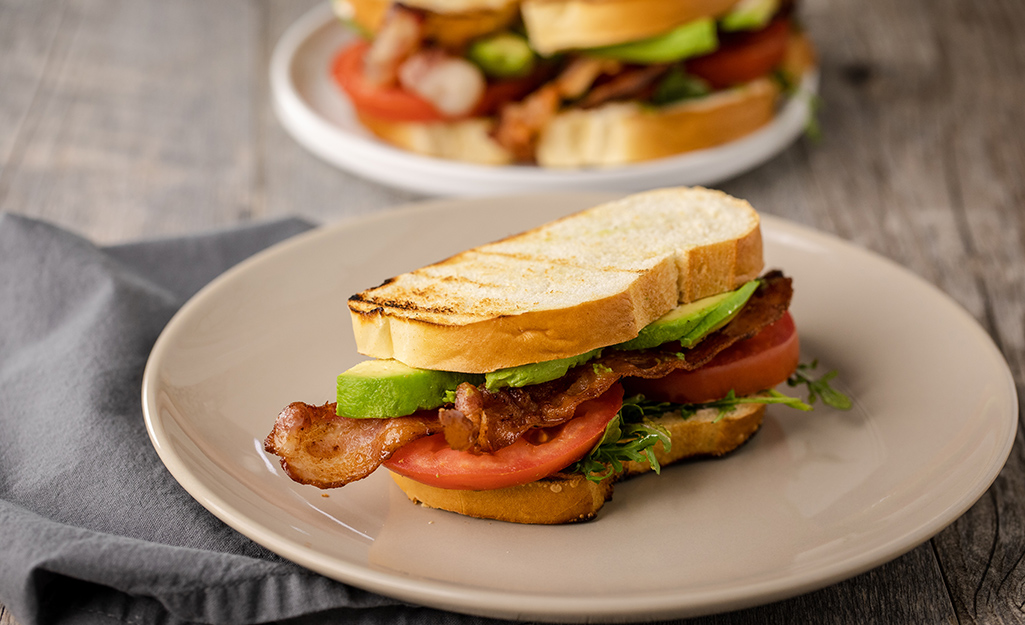
Use your homegrown avocados to upgrade a BLT in this tasty grilled sandwich recipe from Weber.
Bacon, Tomato, and Avocado Sandwiches with Spicy Mayo Recipe
Try this two-fisted sandwich that's jammed with generous layers of filling, including slices of fresh avocado and a slathering of hot sauce–infused mayonnaise. You might find yourself serving this for breakfast, lunch and dinner.
Serves: 4
Prep time: 10 minutes
Grilling time: 13 to 18 minutes
Special equipment: Weber Gourmet BBQ System Cooking Grate, Weber Gourmet BBQ System Griddle
Ingredients:
- 1/2 cup mayonnaise
- 1/2 teaspoon hot pepper sauce or Sriracha
- 1/8 teaspoon freshly ground black pepper
- 12 slices thick-cut bacon, about 1 1/4 pounds, each cut crosswise in half
- 8 slices Italian bread, each about 6-by-3 inches and 1/2 inch thick
- 1 cup packed baby arugula
- 2 medium tomatoes, each cut into 1/4-inch-thick slices
- 1 large, firm but ripe Hass avocado, cut into 1/4-inch-thick slices
- Kosher salt
Instructions:
Prepare the grill for direct cooking over medium heat (350 to 400 degrees Fahrenheit) using the Weber Gourmet BBQ System Cooking Grate. Set the Weber Gourmet BBQ System Griddle in the grate opening and preheat for about 10 minutes.
In a small bowl whisk the spicy mayo ingredients. Set aside.
Working in batches, arrange the bacon in a single layer on the griddle and cook over direct medium heat with the lid closed, until crisp, 6 to 8 minutes, turning as needed. Transfer the bacon to a plate lined with paper towels.
Place the bread slices on the cooking grates over direct medium heat and toast until golden on both sides, 1 to 2 minutes, turning once.
Lay the bread slices on a work surface. Spread the spicy mayo on one side of each piece of toasted bread. Top four of the bread slices with the arugula, tomato and bacon, in that order, dividing equally. Lightly season the avocado slices with salt, and then divide the avocado among the sandwiches, placing them on top of the bacon. Cover with the remaining bread slices, mayonnaise side down. Cut the sandwiches in half and serve immediately.
When you grow avocados, familiarize yourself with the different varieties of avocados before you begin. Avocados grow best in temperatures that range from 60 to 85 degrees Fahrenheit and in moderate humidity, so look for a variety that’s recommended for your growing area. If you live on the northern edge of the range for avocados, look for one like 'Zutano' that can handle temperatures as low as 26 degrees Fahrenheit. Still, be prepared for any cold snaps and protect your trees with frost blankets or other covers.
Whether you need the right planters, seeds or potting soil, The Home Depot delivers online orders when and where you need them.



























